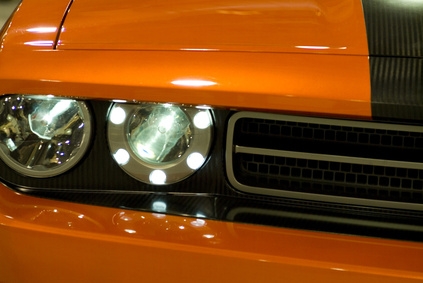
The hot rod movement is built on the idea that just because an engine starts out with less horsepower or too few cylinders doesn't mean that the car it's in can't keep up with larger, more powerful powerplants. Mopar's V-6 engines may not have the displacement or aftermarket support of their larger cousins, but that doesn't necessarily make them any less capable. All it means is that some of the "best" mods are on fact the only mods, and that you'll have to refocus your efforts on adapting universal power-adders to work on your Mopar V-6.
Chrysler's modern V-6 engines come in five basic designs, or "families." The 60-degree engine family comes in two basic varieties, a pushrod cam-in-block design (3.0-liter, 3.3-liter and 3.8-liters) and an overhead-cam design (displacing 3.2 liters, 3.5 liters and 4.0 liters). Another variant of the overhead-cam design called the LH displaces 2.7 liters. The 3.9-liter Magnum V-6 is based on the 5.2-liter Magnum V-8. The PowerTech (aka Next Generation Magnum) was a truck-only engine introduced in 1999 and displaces 2.4, 3.7 and 4.7 liters. The newest Pentastar engine debuted in the 2011 model year and uses the most modern technology to get 283 horsepower from its 3.6 liters.
Aftermarket support for almost all Mopar V-6 engines is practically nonexistent when compared to their V-8 or import V-6 equivalents. Of all of the engine families, only the Magnum 3.9-liter has any real aftermarket support, and even that comes from Mopar Performance itself. The pushrod 3.3-liter has some significant history with Carroll Shelby, so you're not in uncharted territory where that's concerned. Mopar Performance offers a bolt-on supercharger upgrade for the 4.7-liter, which derives much of its architecture from the Hemi V-8. However, you're all but out of luck when it comes to application-specific hot rod parts for the overhead-cam engines and the brand-new Pentastar.
The 3.3-liter High Output V-6 owes much of its existence to Carroll Shelby, who helped Chrysler to engineer the engine for use in an American spec-car racing series. You can still see a bit of this racing heritage in the 3.3-liter's ignition system, which is essentially three separate ignition systems that each control two cylinders. To build his 255 horsepower 3.3-liter, Shelby installed 11-to-1 forged pistons and steel connecting rods, a specially-built upper intake manifold and a ported stock lower manifold. Less impressive than the aftermarket components are the ones that remain stock; Shelby ported and re-used the stock heads, installed a stock crankshaft and reprogrammed the stock computer with an aftermarket chip. Shelby also built a 347 horsepower monster using a newer block and steel main caps, but it didn't survive long on the track.
A few upgrades will work on any engine to one extent or another, so you may need to look into one of these if your engine doesn't have the aftermarket support of the 3.3-liter, 4.7-liter or 3.9-liter Magnum. Head porting is always good for horsepower, although the exact amount depends on the degree of porting work and the engine. A 3.5-liter overhead-cam heads can support nearly 500 horsepower when massively re-worked, but a cam-in-block engine like the 3.3-liter won't get anywhere near that. Then there are the usual assortment of universal high-flow air filters, custom exhaust systems, custom-tuned computer chips and switching to a slippery synthetic oil. Short of adding a rear-mount turbo or nitrous, these universal upgrades may be the only way you can make power with certain Mopar V-6 engines.
Nitrous will always yield more horsepower per dollar spent, but don't expect to run more than 75 to 100 horsepower on an otherwise stock engine without blowing your engine to bits. Centrifugal superchargers and traditional turbos would usually be a safe bet, but you're unlikely to find a kit with the correct bracketry and manifolds to fit your engine and engine bay. If you want big power and don't mind having custom pistons made and installing an aftermarket fuel system and fuel management unit, you can't go wrong with a rear-mount turbo system that places a turbo or two where the muffler used to be. A well-sorted rear-mount turbo system can easily double your engine's horsepower output regardless of its make and model year; just make sure to build the engine to handle the boost before feeding it with pressurized air.